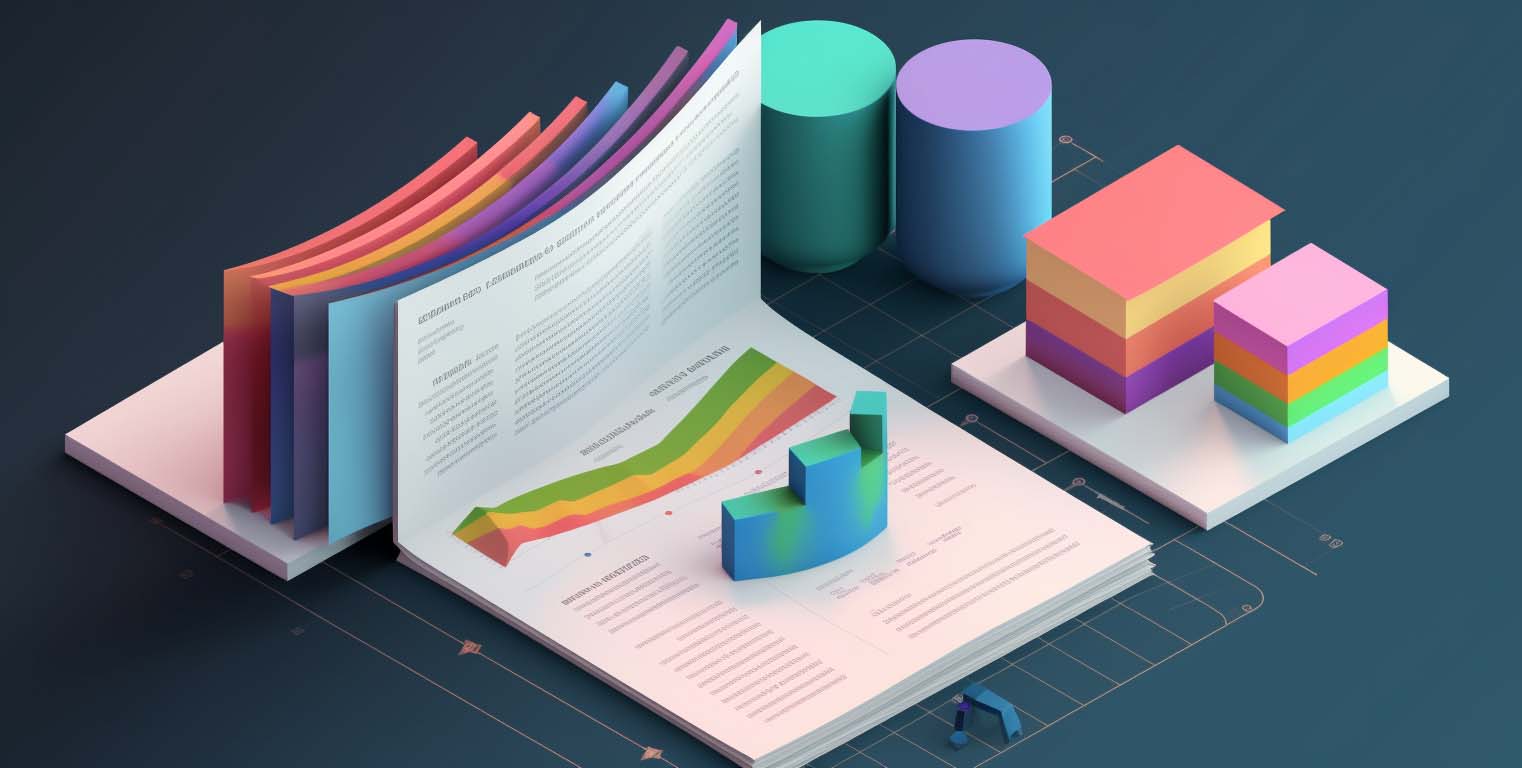The Science of Strategic Decision-Making: A Data-Driven Approach

When making business decisions, following your instincts is invaluable. Be careful, however. Relying on “gut feelings” alone is often a recipe for disaster because it’s difficult to internalize all of the concerns of other executives, employees, customers, and additional stakeholders.
You need objective data to guide your hard-earned experience. This data-driven decision-making process relies on insights gleaned from business intelligence and metric tracking, allowing you to set meaningful objectives and be confident in the choices you make for your organization. For this reason, companies across every industry should seriously consider data-driven decision-making.
So, what is data-driven decision-making? As the name suggests, data-driven decision-making, or DDDM, is all bout using your organization’s data to guide the choices you make. It leverages key performance indicators (KPIs) and similar metrics to determine which strategies will best align with your goals. It allows you to look beyond instinct to make unbiased choices that benefit the entire organization.
Learn more about data-driven decision-making, including its benefits for businesses and best practices for implementing it at your company.
Why Is Data-Driven Decision-Making Important?
According to recent estimates from Exploding Topics, approximately 2.5 quintillion bytes of data are generated every day. This increasing volume of information is now referred to as “big data”, meaning it’s so large that it goes beyond the scope of traditional data science and data processing. Long gone are the days when customer data can be managed in Excel spreadsheets.
Besides the growing amount of data, information is also becoming more complex. The majority of new data collected is now user-generated, meaning it comes directly from your audience through reviews, testimonials, or support calls, or similar content. It may be collected from data sources you maintain, or it may need to be collected from third-party social media or review sites. The data structure and quality varies between sources, making it difficult to create a comprehensive real-time view of everything in one place.
Committing to DDDM drives your organization to become disciplined in your approach to data management. It will inspire you to strengthen the various capabilities associated with data, such as analytics, privacy, storage, and governance. As you become better at data collection and analysis, you’ll be empowered to make better business decisions and achieve goals. In short, DDDM is the first step toward maximizing your organization’s data skills.
The Benefits of Data-Driven Decision-Making
The most immediate benefit of data-driven decision-making is gaining valuable insights from relevant data to enhance business strategy. From this one advantage springs many other advantages:
Creates Measurable Business Goals
Unlike your mission or vision, your goals need to be concrete. Without data, it’s difficult to set quantifiable objectives, which means you likely won’t know your progress towards your goal.
Take the profitability of a new product or service, for example. DDDM will include looking at revenue and percent of new leads before and after introducing the new offering. Depending on the results, you can devise a business strategy to pursue this market further or pull back and focus on initial offerings.
Augments Your Processes
Outside the decision-making process, data-driven decision-making can help you enhance other tasks integral to business success. Data analytics will reveal trends in performance and productivity in different departments that you might otherwise not notice through simple observation. The following are just some processes that may improve through DDDM:
- Customer experience
- Risk management
- Onboarding and training
- Cost estimation when pricing new products and services
Explores New Opportunities
Leveraging data, you can look at aspects that may enable you to invest in new business opportunities. For instance, market data can highlight trends and customer behavior toward the kinds of products or services you currently offer and those you’re considering introducing. This information helps you determine whether or not it may be profitable to enter new markets.
When you implement data-driven decision-making to guide decisions with your core functions, you’ll have greater confidence to branch out into new opportunities and engage in innovation.
Promotes Business Agility
The landscape of digital data is constantly changing due to technological developments like AI and machine learning. Without a clear approach to managing data, your company can fall behind. By investing in DDDM, your business can evolve as data analytics change and the number of data sources grows. It streamlines your existing processes so you can adapt to a changing technical landscape.
Communicates More Effectively About Decisions
Data-driven decision-making makes more effective business leaders because it gives them concrete evidence to support their strategies. When decisions are made on observation alone, it can be difficult to convey the rationale to stakeholders. When you back up your objectives with graphs, dashboards, and similar data visualizations explaining performance metrics, it’s easier for people to understand where they come from, which can boost support.
Fosters a Data-Driven Culture
How does your organization view business intelligence? DDDM creates a culture where employees prioritize data when making choices, even daily decisions. When executive teams commit to data-driven decision-making for all business planning, there’s sure to be more buy-in from the rest of the organization, plus continual improvement in utilizing data.
Case Studies and Examples
We see the benefits of DDDM, but how does it work when applied in real-world situations? The following details some examples of data-driven decision-making from some of the most well-known companies:
Amazon
The recommendation system from Amazon is one of the most talked about applications of data-driven decision-making. The e-commerce company gleans data from customers’ past purchases and buying behavior to tailor recommendations. These suggestions appear at different places on the site, augmenting the customer experience and increasing sales. More importantly, the data is used by Amazon executives to make pricing, marketing, and R&D decisions.
Google’s use of DDDM began with a question — do managers matter? In an initiative called Project Oxygen, data analysts examined employee surveys and performance reviews, comparing this information with retention rates. The results showed these data analysts that good managers increased employee satisfaction and productivity, which ultimately boosts revenue.
Netflix
With the ever-growing number of streaming services, it may seem challenging for one business to remain on top in this industry. However, Netflix is still the clear leader; according to The Motley Fool, it commands 7.5% of TV viewing time for Americans, higher than any other streaming site. Compare this with 3.5% of TV viewing time for the second-place holder, Hulu.
A major reason Netflix continues to dominate this sphere is that it relies on customer behavior data to tailor their experience. For example, looking at past shows a user has watched, Netflix’s recommendation algorithm can bring up similar shows and movies the user may not know about. Simple features like these — which are the result of automated DDDM — help the streaming service retain subscribers and maintain a competitive edge.
Walmart
Data-driven decision-making helps businesses act proactively, even in the face of catastrophe, as evidenced by Walmart. The most famous example comes from Hurricane Frances in 2004. Executives were curious about what customers wanted to stock up on most to prepare for the storm and decided to look at data from other Walmart stores before similar weather events.
This analysis helped them determine which items to send to stores in Florida, the state most affected by the storm. By leveraging data-driven insights, Walmart boosted customer satisfaction and generated profits.
Challenges with Data-Driven Decision-Making
Like all other business strategies , data-driven decision-making poses some challenges. Being aware of these difficulties can help you avoid making mistakes and ensure DDDM delivers on the promise of empowering your company to make better decisions. Common problems decision-makers should look out for include:
Cognitive Bias
Even in business, finding an objective perspective is difficult. Whether it’s confirmation bias, groupthink, or any similar phenomenon, organizations can be predisposed to some ideas over others, even when presented with actionable insights from data. That said, having hard facts from data before your teams can balance out this bias will often lead to more effective decision-making.
Poor Data Quality
For data-driven decision-making to benefit your company, data must be well-managed and easily accessible. Data quality refers to the state of your data sources — is the information organized to promotes uses for decision-making?
To combat this concern, you’ll need a robust data quality management plan. This strategy should encompass each aspect of data quality, from choosing the right business intelligence solution, to implementing data governance.
Neglecting Goals for DDDM
Data collection is just the first step in a DDDM; you also need a plan for using that information once you obtain it. Setting goals for your data-driven decision-making strategy beforehand is one of the best ways to do this, as it will help you pinpoint which data sets are most valuable for achieving these objectives. This practice can also optimize your time with data analytics, which can help you maintain your competitive edge.
Aversion to Change
Even with DDDM in place, business leaders may be inclined to let the past dictate their data analysis. Change can be hard, and people can be reluctant to adopting new ways to analyze data sets, especially if they have been successful relying on gut instincts in the past.
Problems Sharing Insights
Looking at raw data can be challenging for data analysts, let alone executives, customers, or other stakeholders who might not share the same level of data literacy , the ability with which a person can make sense of data.
Make your key insights more accessible and engaging through data storytelling. This means using visualizations like dashboards to display your findings and discuss their implications for your business. Beyond making data more digestible, your reports should also use language tailored to your audience to increase comprehension.
Ignoring Adverse Results
If DDDM produced bad results in one instance, you may want to ignore the outcome and move forward. However, data-driven decision-making can be valuable even when it doesn’t lead to your desired results.
Each data-driven business decision should involve a learning component for reflection. This practice will help you understand what’s working and what requires improvement for future initiatives. Consistent monitoring of your DDDM approach will bring you closer to being a full-fledged, data-driven organization.
Best Practices for Implementing a DDDM Strategy
If you believe your business can benefit from data-driven decision-making, you can begin the process toward more effective use of data. Be forewarned — it takes time and effort to transform large amounts of big data into actionable insights that drive informed decisions. The following details a step-by-step progression to help you design and execute a strong data-driven decision-making strategy:
- Define the goals and objectives for DDDM
- Consider your company’s vision and how it may inform goals
- Develop questions related to your objectives, which can guide the metrics you use and insights you focus on
- Make note of biases and discuss how to combat them
- Figure out which KPIs will be most helpful for measuring your success with objectives
- Survey teams to determine different data sources
- Gather and organize data
- Use visualizations to better examine data
- Analyze the information (consider leveraging BI technology and other tools to assist at this stage)
- Look for trends and patterns in your analysis
- Factor these insights into your decision-making process
- Determine how to present and disseminate your findings, accounting for the data literacy of your intended audience
- Revisit your data analysis for comparison and to aid in further business decisions
This is a general outline for DDDM — there may be additional items you wish to incorporate into your strategy based on your specific intentions.
What’s more, you may find that some aspects of your data-driven decision-making approach were beneficial for decision-making while others created further challenges. For this reason, DDDM requires frequent review to help you continually maximize its value for your company. Continuing to evolve data-driven decision-making is also important because the behaviors and preferences of customers, partners, and other stakeholders shift over time.
Spider Impact: Transform Business Strategy with Data-Driven Decision-Making
Since so much of your success lies in gathering and analyzing the right types of data, engaging in decision-making without this information can leave your business stagnant or even experiencing negative growth. Even if an instinct or observation is driving a desire to start a new initiative, looking at the more substantial evidence of data can give you the assurance you need to move forward with a decision.
At Spider Strategies, our cloud-based software, Spider Impact, can help you leverage data to make better decisions and propel business growth. Impact is second to none for data visualization, as well as conveying your performance and strategic goals throughout your organization. To experience the benefits of Spider Impact yourself, sign-up for a free trial or demo today.
Demo then Free Trial
Schedule a personalized tour of Spider Impact, then start your free 30-day trial with your data.






